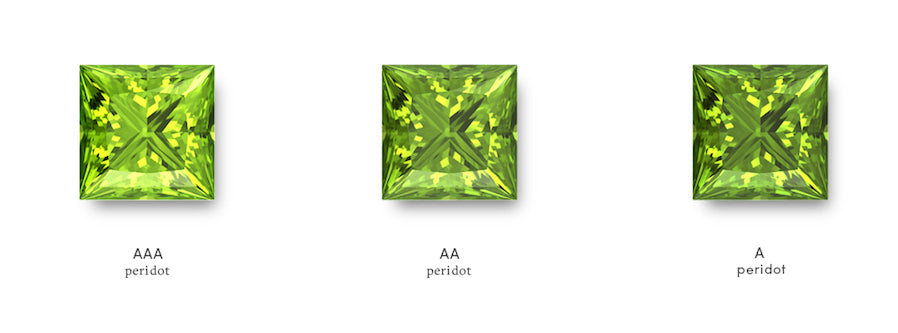Peridot – A Brief History
A derivative of the Arabic word faribat, peridot is a yellow-green gemstone found in the rocky surface of the earth’s crust. It is believed to date back to the formation of the solar system, and on rare occasions, raw peridot has even been discovered within pallasite meteors and amongst comet dust.
Ancient Times and Geographical Ties
Peridot history is rich and interesting. The ancient Egyptians fondly referred to the stone as the “gem of the sun,” and believed it would protect its owner and deter evil spirits. Legend has it the gemstone was initially mined on a snake-ridden island situated in the Red Sea--known as Topazios (now better known as St John’s Island). The miners had a difficult time extracting the precious stones until the Pharaoh drove the serpents into the sea.
As the Egyptians seemed to have an affinity with the stone, it comes as no surprise to learn that some believe Cleopatra’s hoard of Emeralds were not the well-known green gems at all, but actually peridot stones. This confusion seems to have continued over the years, with people regularly heralding the beauty of the gemstones embellishing the shrine of the Three Holy Kings (Cologne Cathedral, Germany), only to discover the green gems are Peridots rather than emeralds.
Where can natural peridot be found today?
Peridot has also been discovered inside rounded rocks, flowing within lava, in China, the USA, and Vietnam. There are also one or two cases of the gem presenting within crystals found clinging to the interior of coagulated molten rock in areas such as Pakistan, Finland, and Myanmar.
Peridot Meaning and Birthstone
A variety of the mineral Olivine, the crystal form signifies compassion and positive energy, and is often used to rebalance and align the mind and body. Wearers of the precious stone are believed to benefit from good health and peace. The peridot birthstone is associated and Olivine jewelry makes a superb present for those celebrating birthdays during this month.
Peridot Color Range
Peridot is sometimes confused with other gems, such as topaz (perhaps due to the fact that Peridot was founded on an island called Topazios). But the two are very different. The iron within peridot determines its color, which ranges from brownish-green to yellowish-green to a pure green that’s bright and vibrant. The most common on the market is the yellowish-green colored gemstone, and pure olive-hued green gems are rarer. Below is the grade scale for Peridot, the highest or best grade is AAA. With AA being a good grade, and B being a satisfactory grade.

With Clarity Peridot Jewelry
A fine and attractive gemstone featuring vivid colors, peridot is regularly used by jewelry makers far and wide. Take a look around and you will find pretty earrings, pendants, bracelets all available to discerning shoppers.
With Clarity Peridot Rings
If you are looking for a statement piece, a peridot gold ring would be a perfect choice. The stone also complements other precious gems well. For example, a peridot and diamond ring will stand out if you’re looking for something to catch the eye of your nearest and dearest. If you’re planning to propose, a peridot engagement ring could be a fabulous alternative to the traditional options on offer.
FAQs
Ancient Egyptians called peridot the “gem of the sun” owing to its bright, sun-like radiance and beauty. They also believed that it could protect its owner and deter evil spirits.
Where can natural peridots be found?Natural peridots can be found inside rounded rocks flowing with lava in China, USA, and Vietnam. It is also mined in many other different locations, such as Pakistan, Finland, and Myanmar.
Are topaz and peridot the same?No, both are different gemstones. Peridot is the yellowish-green to greenish-yellow gem variety of the mineral olivine, while Topaz is a silicate mineral of aluminum and fluorine.
Is peridot a birthstone?Yes, peridot is the birthstone for those born in August. Jewelry embellished with this gem is, therefore, a wonderful gift for August birthdays.









